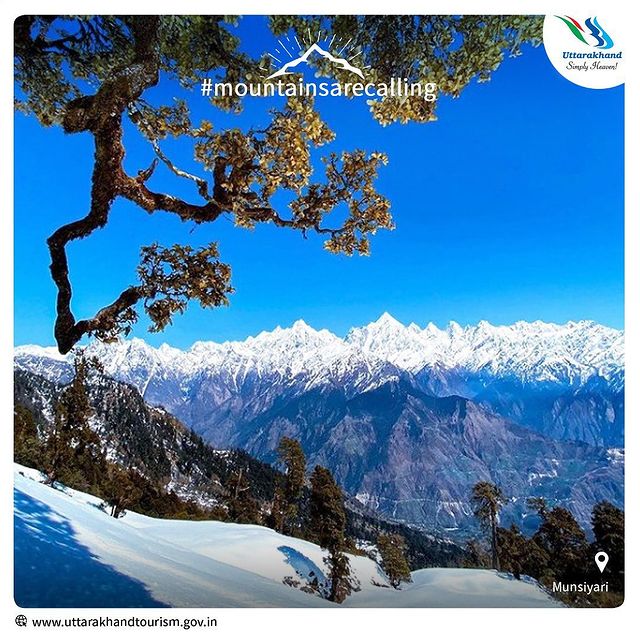07/08/2025
Social Media: Turning Uttarakhand’s Hidden Gems into Global Destinations—With Caution

Tourism in Uttarakhand isn’t just thriving—it has reached unprecedented levels. According to official data, 5.81 crore domestic tourists visited in 2023, up from 5.46 crore in 2022. Provisional estimates for 2024 indicate that the state surpassed the 6 crore visitor mark, the highest ever recorded. Pilgrimage tourism remains central: the Chota Char Dham Yatra in 2024 drew over 4.5 million pilgrims, with Kedarnath and Badrinath each welcoming more than 1.5 million devotees.
Social media, often dismissed as trivial or fleeting, has quietly but dramatically reshaped tourism landscapes worldwide. Uttarakhand, with its lush mountains, pristine valleys, and revered pilgrimage sites, offers a textbook example of how digital storytelling can catapult lesser-known destinations into international spotlights. However, this digital-driven growth comes with responsibilities—and challenges—that we must confront urgently.
Recent researches underscores social media’s decisive role in Uttarakhand’s tourism surge. Many analytical studies illustrates that platforms like Instagram and YouTube aren't merely marketing channels; they directly influence traveller decisions, shaping awareness and intent far more effectively than conventional advertising. Influencer partnerships and user-generated content (UGC) deliver significantly higher engagement, turning previously obscure locations such as Chopta-Tungnath, Kedarkantha, Harshil, and Madhmaheshwar into bustling travel hotspots. The data speaks clearly: posts featuring genuine traveller experiences resonate deeply, outperforming traditional promotional content by nearly 60%.
The transformative power of social media is vividly apparent in pilgrimage tourism as well. Uttarakhand's Char Dham Yatra attracted over 4 million visitors in recent years, significantly driven by widespread online visibility and community-driven digital interactions. Tourists today trust peers more than formal advertising, and online reviews have become pivotal in shaping expectations and influencing travel decisions. Uttarakhand Tourism's official accounts on Facebook (1.2 million followers), Instagram (439K followers), and YouTube (28K followers) underscore the digital engagement strategy's success (Uttarakhand Tourism Official Website, 2025).
Yet, the success story has a nuanced flip side. The study cautions that unchecked social media promotions can breed misinformation and unrealistic expectations. Tourists often arrive expecting idyllic perfection, and discrepancies between expectation and reality result in negative feedback. Places like Mussoorie, Nainital, and Dehradun already face overtourism, where weekend crowds overwhelm infrastructure, strain essential services, and degrade local ecology. For instance, Nainital saw a visitor footfall exceeding 10 lakh during peak seasons in recent years, severely stressing local resources (Ministry of Tourism, Government of India, 2024).
Addressing these challenges requires a balanced, strategic approach. First, promoting authenticity must be central to Uttarakhand’s tourism strategy. Social media narratives should depict realistic, nuanced representations of experiences, ensuring travellers’ expectations align closely with reality. Second, sustainability and responsible travel must become core themes in digital marketing. Eco-tourism initiatives, cultural heritage promotions, and local community experiences should take precedence over superficial aesthetics.
Further, managing infrastructure and visitor capacities is imperative. With tourist footfall vastly exceeding Uttarakhand’s permanent population, the state government must urgently enhance infrastructure and institute strict capacity management measures, as seen recently with visitor registration initiatives in Mussoorie.
Tourism in Uttarakhand has witnessed significant fluctuations in recent years. In 2019, the state recorded 37.58 million domestic tourists and 0.15 million foreign tourists, taking the total to 37.73 million. The COVID-19 pandemic severely impacted travel in 2020, with tourist arrivals dropping sharply to 7.05 million, comprising 7.03 million domestic and just 0.02 million foreign visitors. Recovery began in 2021 as the total arrivals rose to 26.45 million, with 26.40 million domestic and 0.05 million foreign tourists. The momentum strengthened further in 2022, when Uttarakhand hosted 45.94 million tourists, including 45.85 million domestic and 0.09 million foreign arrivals. By 2023, tourism reached an all-time high, with 58.22 million visitors—58.10 million domestic and 0.12 million foreign—underscoring the state’s growing appeal as a premier travel destination. (Source: Ministry of Tourism, Government of India, 2024).
The state must also diversify its tourism offerings beyond pilgrimage. While religious tourism accounts for a significant share of visits, leisure, adventure, and eco-tourism segments are growing rapidly and deserve equal promotional focus. Digital marketing strategies should spotlight offbeat locations, rural heritage, and environmentally sustainable experiences to distribute tourist flows more evenly.
The path forward lies in leveraging data-driven insights, fostering realistic narratives, and committing unwaveringly to sustainability. Emerging technologies like AI-driven personalization and virtual reality could further enhance tourism without compromising environmental integrity. Uttarakhand’s success depends on achieving harmony between growth and conservation, ensuring that today's digital momentum builds lasting benefits rather than fleeting popularity.
Social media, when responsibly harnessed, can help Uttarakhand become not just a popular destination, but a model for sustainable, inclusive tourism globally..
References: